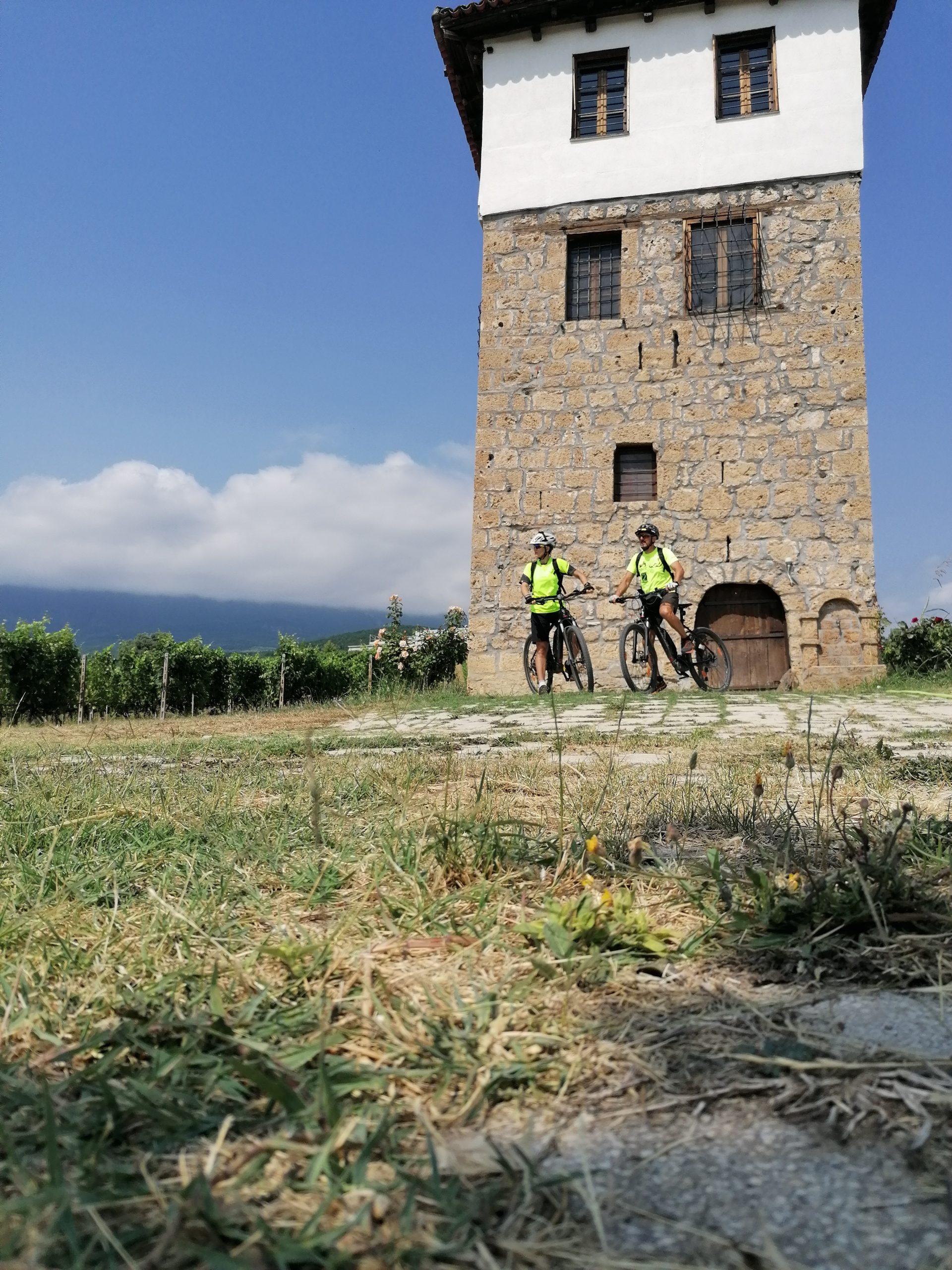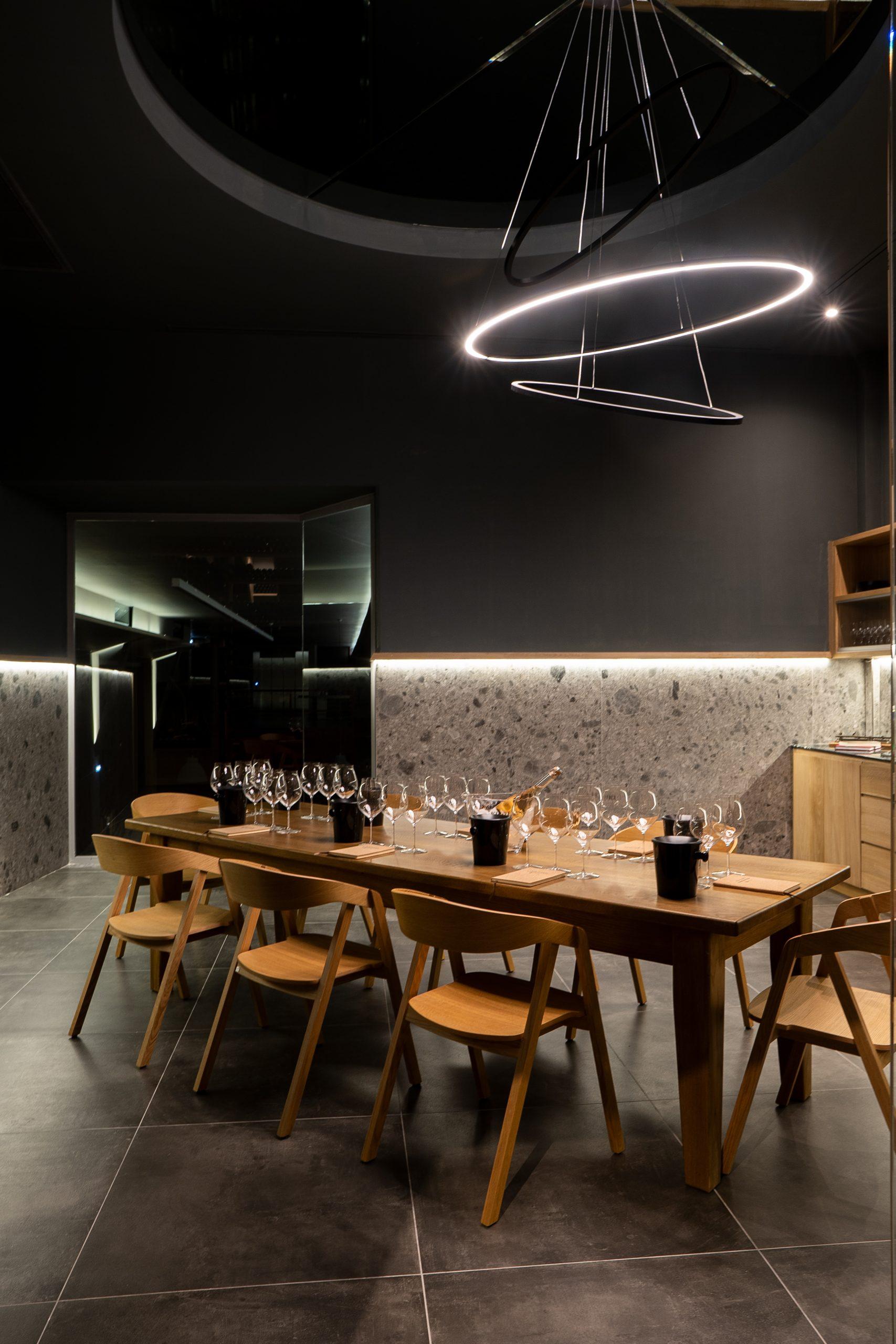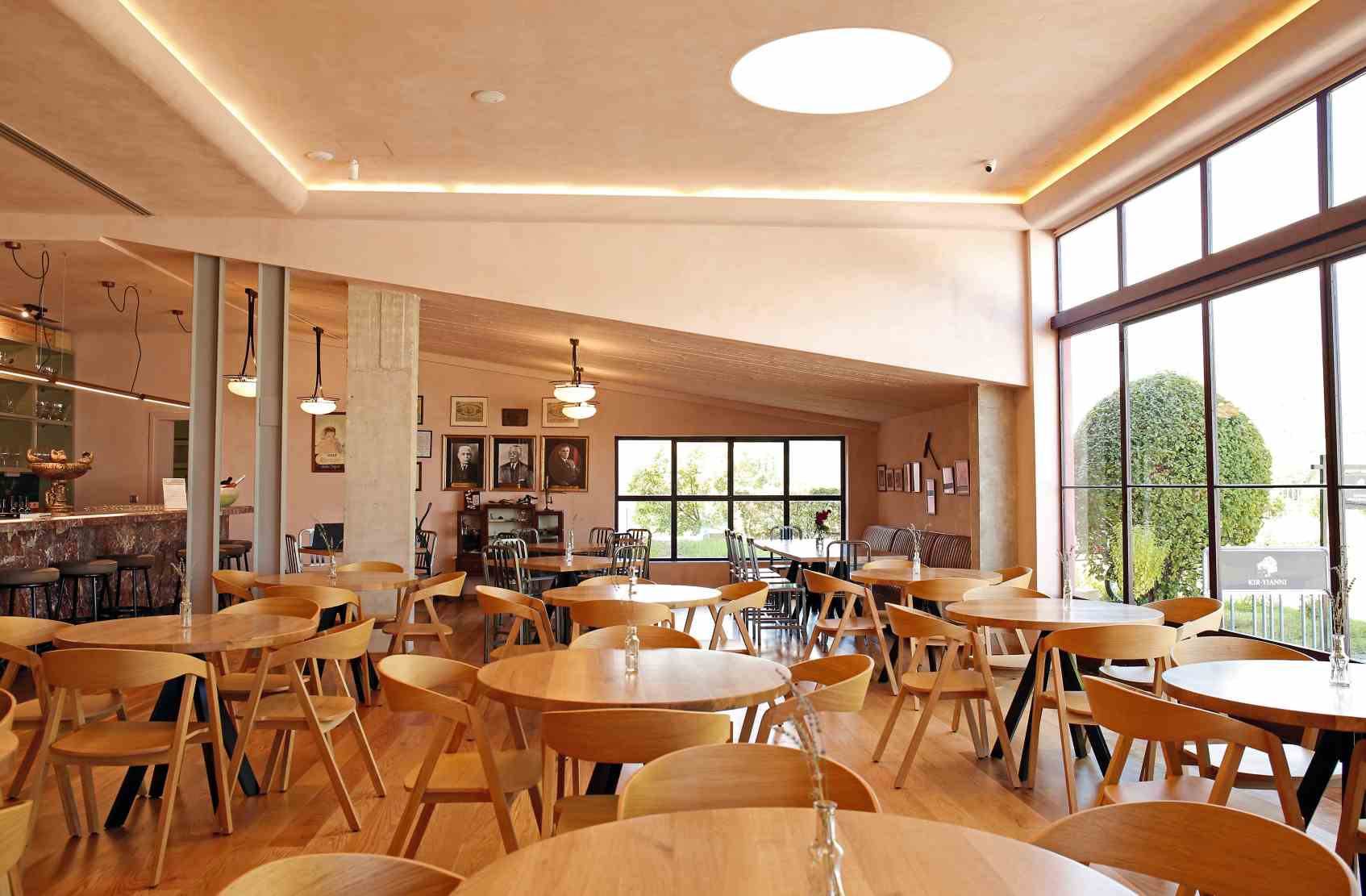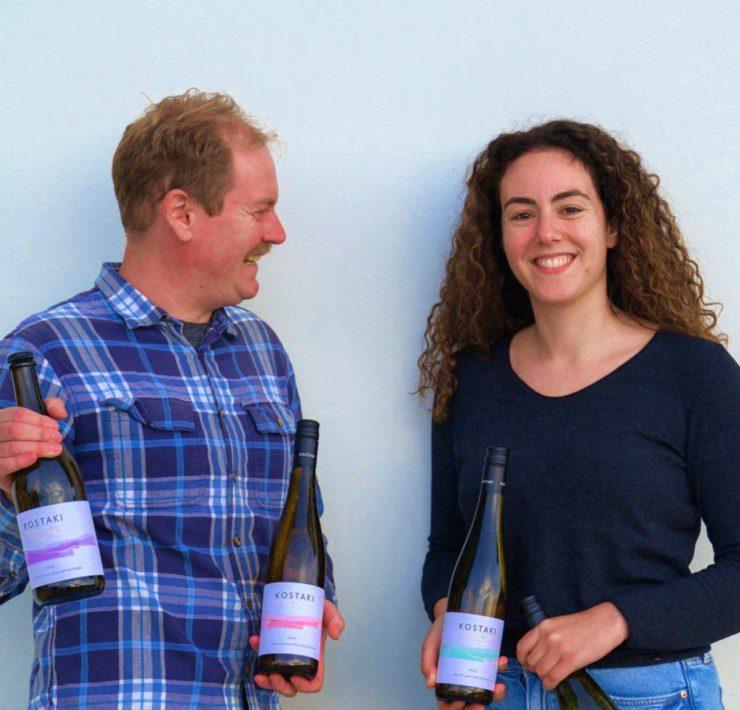There’s nothing more rewarding than seeing a person’s vision come to life. Five years had passed since our first visit to Kir-Yianni winery in Giannakochori near Naoussa in northern Greece, an area famous for its Xinonavro wines, and what awaited us on our return was a great surprise.
During our first visit, Stellios Boutaris, one of Greece’s leading winemakers, had taken us around the areas under construction and talked enthusiastically about his plans, which included the creation of a visitor center and a restaurant he had dreamed of creating, with views of the wonderful vineyards.
Today, five years later, having gone through great difficulties and setbacks, including the COVID pandemic, the excellent team of dedicated individuals at the Kir-Yianni Estate can rightly be proud that it’s now acknowledged as one of the most beautiful wine tourism destinations in Greece.

On that sunny day of our return, however, as we walked over to the renovated winery building, nothing resembled what we remembered from our first visit. In the courtyard, there were tables full of guests enjoying their wine, accompanied by the excellent menu curated by the Executive Chef of the Estate, Kiriaki Fotopoulou, which we would enjoy a little later: great flavors based on local cuisine, dishes set to perfectly match the labels of the Estate, and excellent raw materials from the vegetable garden, from which seasonal produce is always available, as well as wonderful handmade breads. What more could anyone ask for…?
A little further down, in an area overlooking the vineyards, another group was enjoying treats from a picnic basket created by the Estate, while electric bikes awaited those more in the mood to explore the steep slopes of the vineyards.
The interior of the restaurant, done in warm colors and decorated simply as befits such a space, is designed to accommodate visitors on days when the weather does not permit outdoor seating. On the walls, photos of the founders of I. Boutaris & Co. – Ioannis Boutaris, Stellios Boutaris and Konstantinos Nitsiotas – and of the company’s first labels remind visitors of the long history and tradition of this family which, although originally from Nympheo, a small village near the city of Florina, has become inextricably linked with the city of Naoussa.

On our most recent trip, Stellios Boutaris once again took it upon himself to guide us around the premises of the winery, this time explaining how his father, Yiannis Boutaris – the great visionary of the family and a man who has had a great impact on the history of Greek wine – bought the land the vineyard now occupies in the late ’60s from a local farmer, with the aim of getting into viticulture, much to the chagrin of his own father, who’d never imagined the family as viticulturists. The Boutaris men had been, until then, primarily merchants. “We, my son, go to work in a suit,” Yiannis’ father used to tell him. Nonetheless, Yiannis persisted, and the first harvest took place at this winery in 1997; this was when the story of the
Kir-Yianni Estate began. Our tour of the winery premises continued with an excellent tasting session in a wonderful room above the cellar, next to where the old vintages are stored, where guests can have private wine tastings. We had the opportunity to sample three different versions of Xinomavro wines, from Naoussa, Amynteo and Goumenissa respectively, and to try different vintages of Ramnista – from the Estate’s most premium labels – in a small vertical tasting.
Seated at the wonderful table that had been prepared for us by the helpful members of the Estate team, we shared smiles with our fellow guests. The menu was excellent; every dish we tried, from the beetroot with smoked beef tongue and walnut to the trachana with mushroom, sausage, hazelnut and truffle oil, kept us happily rooted in our seats until well after dark, chatting and slowly sipping the excellent wines.

The surprises on this second visit to the area were not limited to the Kir-Yianni Estate. Having more time at our disposal on this trip, we were able to tour the city of Naoussa as well, and discover its hidden charms. We saw some of the old mansions that are still standing, including the Matthias Mansion and its water mill, which dominates the Old Town , and we got to know the people who are working to preserve the “Janissaries and Boules” custom, an exclusively local tradition whose roots have been lost over the centuries. A three-story house in the Batania area of the town serves as the headquarters for a group of dancers, young and old, who prepare all year round to take to the streets of Naoussa every Carnival season in traditional costumes and masks.
Our exploration of the city began in the inner courtyard of the Palaia Poli Hotel, a beautifully renovated traditional mansion; led by the tireless Elpida Palamida, the manager of the Kir-Yianni Estate’s visitor area, we wandered upward through the alleys of Naoussa’s Old Town, bisected by the river Arapitsa, climbing to the district’s highest point, from where a small waterfall drops to a pool below. From this spot, just as the Turkish forces were invading the city during the Greek War of Independence, a number of Naoussa women, their children in their arms, jumped to their deaths to avoid falling into the clutches of the victors. Today, near that same fateful pool of water, different wineries in the area have submerged 140 bottles of Xinomavro in the river as part of an ageing experiment.
Perhaps when we think of tourist destinations in Greece, Naoussa is not the first that comes to mind. The truth, however, is that the wider area of Imathia is of great interest. The Royal Macedonian Tombs and the wonderful museum of Vergina can be found here, as can the ruins of the School of Aristotle, a magical place with a very special aura. What’s more, the Wine Routes of Northern Greece, of which the Naoussa Wine Route is a part, was one of the first wine-tourism networks created in Greece; today, plays a very important role in this constantly growing industry.











